The content of the article
Black plaque on the teeth of children is a very common phenomenon, which is observed in children at different ages and even in infants. These teeth look ugly, while the child’s mouth does not smell very good. However, the main point is that black teeth give the mother a signal that there are violations in the functioning of the child's body. Because of this, if a black coating occurs, you should contact a specialist as soon as possible. Knowing the factors influencing the appearance of this scourge, it is possible to prevent its occurrence.
How does it look
Most often, a dark coating looks like an uneven black edging, which is distributed throughout all the teeth. Less commonly, it is expressed by dark spots. Darkening in many cases is observed from the inside of the teeth, however dark spots can occur on the outside of the teeth. Such plaque cannot be removed with a simple toothbrush.
Color changes can occur gradually, and in certain babies, the teeth darken in almost a few days. It can happen at any age.
The essence of the problem
Dark plaque can occur suddenly, in certain cases, it can completely cover the surface of the teeth. Deposits on the surface are a composition consisting of food debris, dead elements of the mucous membrane and various microbes, both beneficial and harmful. If oral hygiene or for other reasons is not well conducted, all this accumulates over time and turns into dense darkened deposits.
So what is the danger. Dark deposits on the surface of the teeth not only spoil their appearance, but also provoke negative and far-reaching troubles. Here are some of the consequences:
- Tartar formation.
- Destruction of tooth enamel.
- Gum disease
- Gums begin to bleed.
- Strong tooth sensitivity.
Causes
There are a lot of factors influencing the occurrence of dark plaque on the teeth of a child. They can be both harmless and very dangerous for the baby.
- Priestley's raid. The most common reason that special microbes are guilty of changing the shade of teeth is that they form a dark pigment in the course of their life. Plaque settles on the surface of milk teeth, and then completely disappears. He practically does not pass to new teeth. Factors affecting the spread of such microbes are still unknown. Such a raid is not dangerous and is only an aesthetic problem. It can be removed from the dentist, but over time it will reappear. With the age of the child this plaque will disappear by itself.
- Caries. Another fairly widespread factor in the occurrence of dark plaque. The milk teeth of children are very susceptible to the growth of caries, since their saliva does not yet have sufficient bactericidal properties, which are protection against numerous multiplication of microbes. Initially, the teeth become yellow in color, and then, if left untreated, they acquire a dark color. The state of tooth enamel, poor hygiene, and high consumption of sweets influence the growth of caries. Many people are mistaken in thinking that dark plaque on milk teeth should not be treated, because they will still be replaced by molars. But tooth replacement is gradual, and molars can become infected with milk caries.
- Disorders in the intestinal microflora. In certain situations, dark teeth can be a sign of dysbiosis, this is when there are many pathogenic microbes in the intestinal microflora.
- Lack of calcium. Its lack in the body often leads to dark plaque. This can only be determined with a full examination.
- An excess of iron. To treat any disease, the baby is prescribed medications containing iron. A high level of iron in the child's body can cause black plaque on the teeth.
- Salivary upset. Many babies still have very little saliva after eating. Therefore, tooth enamel is poorly wetted and cleaned. The accumulated food leftovers increase the functioning of various harmful microbes.
- Heredity. If the child’s parents had dark teeth in childhood, then this can be inherited by the baby. A change in nutrition provokes changes in the work of the gastrointestinal tract in children, which cause the formation of a dark coating on the surface of the teeth.
- Long and chronic illnesses. They make the baby’s immunity weak, and he cannot fight negative germs in his mouth. Also, the child takes antibiotics that adversely affect the microflora in the intestine. All this leads to blackening of the teeth.
- "Bottle caries." With regular use of rubber nipples in infants, the teeth first turn yellow and then darken. To eliminate this, it is advised that after the first teeth appear, completely abandon the nipple and change the bottle to a plastic drinker.
- Illiterate toothpaste choice. Darkening of the surface of the teeth can be triggered by the fact that brushing occurs with a paste with a significant fluoride content. However, it is worth noting that there are few toothpastes that contain this element.
It happens that the baby’s first erupted teeth are already black. The reason for this must be sought in the problems of intrauterine growth of the baby. These problems include:
- Mom during pregnancy ate a lot of foods that contain iron and fluoride.
- During pregnancy, a woman took certain medications.
- During the waiting period for the baby, the woman suffered a viral disease.
Diagnostics
Dark plaque is a sign of any violation in the child’s body, quite often this violation is caries. Current technologies make it possible to determine the cause at the earliest stage of its development.
If a faint dark spot appears on the surface of the teeth, it is necessary, as soon as possible, to visit the dentist, who will diagnose with a laser and identify the disease at an early stage. Scanning the teeth, the laser beam will find the focus of caries and determine the level of damage. Based on the results, the doctor will conduct a timely medical cure.
Treatment methods
The doctor can determine the methods of therapy for dark teeth only after establishing a diagnosis of the disease. Only removing the causes of the appearance of dark plaque can guarantee that the black coating on the surface of the teeth will disappear and not form again:
- If the microflora in the intestine is disturbed, the doctor will prescribe special therapy, it is also recommended to change the baby’s diet.
- A lack of calcium or an excess of iron will return to normal by choosing a competent diet or using certain medications.
- Early caries growth can be inhibited by using certain treatment methods, such as silver enamel coating or fluorination. The surface of the teeth is treated with special compounds that preserve the condition of the teeth. This allows the child to wait for the replacement of primary teeth with molars without significant and painful damage to the enamel.
- Plaque. Cleaned with a highly professional brushing with a specialist. However, this does not guarantee that the plaque will not reappear.To prevent damage to tooth enamel, you do not need to try to remove dark spots on your own. It is necessary to wait for the time when the child grows up and the dark coating is gone.
Alternative methods of treatment
It must be remembered that the methods for removing dark plaque at home alone, which are often used by adults, can in no case be used by children. Children's tooth enamel is still very weak and not strong, the coating is not stable, and it can be quickly destroyed by external actions.
One of the methods that you can use at home on your own is glycerophosphate, powdered calcium. Add a drop of lemon juice to the powder. However, this tool can not be used constantly. It can be used only occasionally, in the evening, after the child has eaten and drank.
You can use certain children's toothpastes for cleaning, which remove not only dark plaque, but also guarantee that it does not form again within two months. It is necessary to take a cleaning course with such a paste.
Prevention
Preventive measures must be started immediately, as soon as the baby's first teeth erupted. There are a number of recommendations that will help reduce the formation of negative deposits on the surface of the tooth to a minimum:
- As soon as the baby's teeth erupted, they need to be cleaned with a sterile cotton pad, which is moistened with sage or chamomile for antimicrobial exposure. It is allowed to use a certain rubber brush for this, which mom puts on her finger. You can only use toothpaste for children if the baby has learned to rinse his mouth out on his own. Then the child should brush his teeth twice a day, with special movements. Teaching the baby this procedure is necessary in a timely manner.
- It is necessary to control the baby’s diet and not give him a lot of sweets in the form of sweets, water with gas, cakes or pastries. If the child ate sweets, you should immediately rinse his mouth with water. The child’s menu should include fruits and vegetables that help clean tooth enamel.
- Of primary importance for the condition of the teeth is the condition of the oral mucosa. In the room where the child is, you need to maintain normal air humidity and temperature so that the baby's mucous membrane does not dry out. In addition, it is necessary that the baby breathes correctly. Breathing should only be through the nose.
- Moms are strictly forbidden to lick the nipple before giving it to the baby. This provokes the transmission of many negative microbes from an adult to a child. All these actions contribute to the growth of caries. For the same reason, a child should eat only with his own cutlery.
- It is necessary in time to wean the baby from the dummy and small bottles that provoke the occurrence of caries. You do not need to give your baby juice or milk to drink at night, it is better to give regular warm boiled water. The child must be transferred to another food, while abandoning the bottles. It’s best to teach your child how to use cutlery as quickly as possible.
- Obligatory prevention is a constant examination of the child’s teeth by a specialist - a dentist. The first visit to the dentist should take place when the baby is nine months old, then one year old, then once every six months. Dark plaque is the cause of parental alertness, but not panic. A professional doctor will identify the cause, prescribe competent treatment, and help remove this ailment forever.
The main thing for parents is that they must remember that the condition of the baby's teeth must be taken care of from a very young age.
If the parents notice that the child’s teeth are blackening, you do not need to postpone the visit to the dentist.If there are no serious factors - heredity or chronic diseases associated with dentistry or intestinal dysfunction, then a black plaque on the surface of the teeth in a baby is practically always simply eliminated by a specialist when handling. However, no one guarantees that he will not arise again.
Remember, if you apply continuous prevention, the baby will grow up and become an adult who will not have serious difficulties with his teeth, since from an early age he will know how to take care of the condition of the oral cavity. Take care of the teeth of your baby, because this is an indicator of his health!
Video: black plaque on a child’s teeth - what to do?


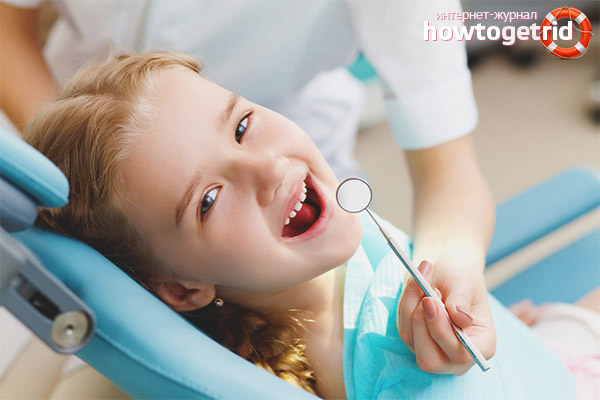
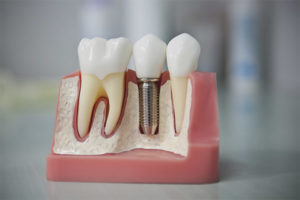

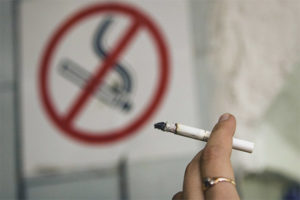
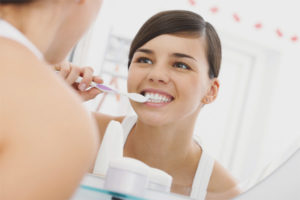

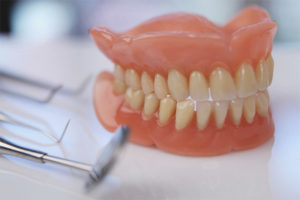


Submit